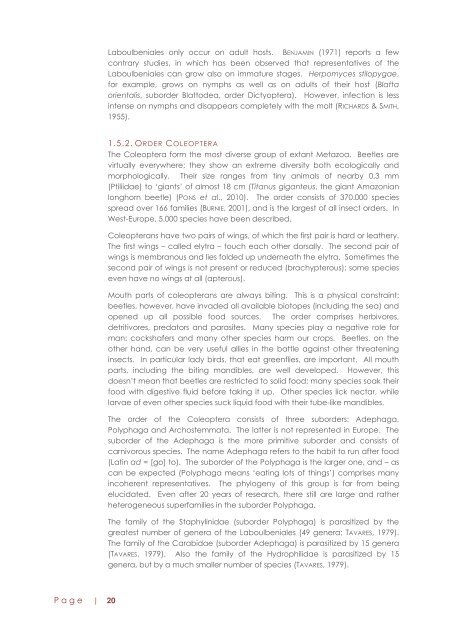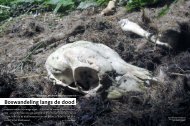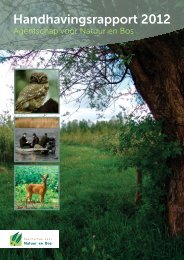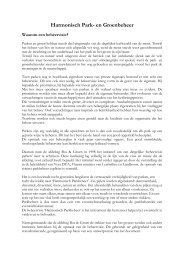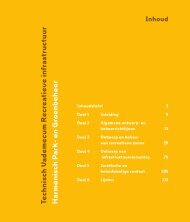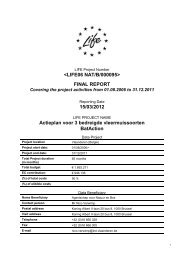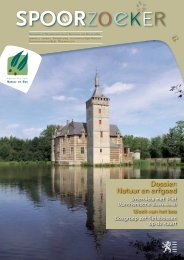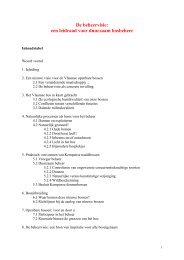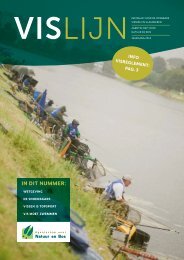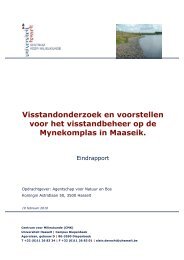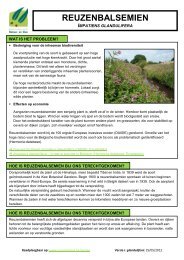LUMBSCH & HUHNDORF (2007) distinguish four families within the Laboulb<strong>en</strong>iales, asalready recognized by TAVARES (1985):Ceratomycetaceae 12 g<strong>en</strong>era;Euceratomycetaceae 5 g<strong>en</strong>era;Herpomycetaceae 1 g<strong>en</strong>us;Laboulb<strong>en</strong>iaceae 125 g<strong>en</strong>era.1.5. HOSTS1.5.1. GENERALLaboulb<strong>en</strong>iales are found on theintegum<strong>en</strong>t of living arthropods,mostly true insects. Table IV shows thedistribution of arthropod hosts beingparasitized by Laboulb<strong>en</strong>iales. Themajority of the Laboulb<strong>en</strong>ialesparasitize repres<strong>en</strong>tatives of thesubphylum Hexapoda, oft<strong>en</strong>Coleoptera (beetles). About 80% ofthe described species ofLaboulb<strong>en</strong>iales parasitize beetles(WEIR & BLACKWELL, 2005).The vast majority of the beetle hostsare repres<strong>en</strong>tatives of the twofamilies Carabidae (ground beetles)and Staphylinidae (rove beetles).Also other coleopteran families arebeing parasitized in minor degree,among them Alexiidae, Anthicidae,Apotomidae, Byrrhidae, Catopidae,Cerambycidae, Chrysomelidae,Ciidae, Clambidae, Cleridae,Coccinellidae, Corylophidae, Cryptophagidae,Cucujidae, Dryopidae,Table IV: Distribution of arthropod hostsparasitized by Laboulb<strong>en</strong>iales, persubphylum.Phylum ArthropodaSubphylum CheliceriformesClass ChelicerataSubclass ArachnidaOrder AcariSubphylum MyriapodaClass DiplopodaSubclass ChilognathaOrder CallipodidaOrder JulidaOrder SphaerotheriidaOrder SpirostriptidaSubphylum HexapodaClass PterygotaSubclass ExopterygotaOrder HemipteraOrder MallophagaOrder ThysanopteraOrder DictyopteraOrder OrthopteraOrder DermapteraOrder IsopteraSubclass EndopterygotaOrder Hym<strong>en</strong>opteraOrder DipteraOrder ColeopteraDytiscidae, Elateridae, Endomychidae, Erotylidae, Gyrinidae, Haliplidae,Heteroceridae, Histeridae, Hydra<strong>en</strong>idae, Hydrophilidae, Lathridiidae,Leiodidae, Limnichidae, Microsporidae, Mycetophagidae, Nitidulidae,Passalidae, Phalacridae, Ptiliidae, Scarabaeidae, Scydma<strong>en</strong>idae, Silphidae,Silvanidae and T<strong>en</strong>ebrionidae and Zopheridae (HINCKS, 1960; SCHELOSKE, 1969;MAJEWSKI, 1994, 2003; SANTAMARÍA et al., 1991; DE KESEL, 1997).[Name changes and updates on taxonomy were reviewed using VORST (2010). For example, manylaboulb<strong>en</strong>ialean species have be<strong>en</strong> recorded on members of the former family Pselaphidae,nowadays regarded as a subfamily Pselaphinae within the Staphylinidae.]P a g e | 19
Laboulb<strong>en</strong>iales only occur on adult hosts. BENJAMIN (1971) reports a fewcontrary studies, in which has be<strong>en</strong> observed that repres<strong>en</strong>tatives of theLaboulb<strong>en</strong>iales can grow also on immature stages. Herpomyces stilopygae,for example, grows on nymphs as well as on adults of their host (Blattaori<strong>en</strong>talis, suborder Blattodea, order Dictyoptera). However, infection is lessint<strong>en</strong>se on nymphs and disappears completely with the molt (RICHARDS & SMITH,1955).1.5.2. ORDER COLEOPTERAThe Coleoptera form the most diverse group of extant Metazoa. Beetles arevirtually everywhere; they show an extreme diversity both ecologically andmorphologically. Their size ranges from tiny animals of nearby 0,3 mm(Ptiliidae) to „giants‟ of almost 18 cm (Titanus giganteus, the giant Amazonianlonghorn beetle) (PONS et al., 2010). The order consists of 370.000 speciesspread over 166 families (BURNIE, 2001), and is the largest of all insect orders. InWest-Europe, 5.000 species have be<strong>en</strong> described.Coleopterans have two pairs of wings, of which the first pair is hard or leathery.The first wings – called elytra – touch each other dorsally. The second pair ofwings is membranous and lies folded up underneath the elytra. Sometimes thesecond pair of wings is not pres<strong>en</strong>t or reduced (brachypterous); some speciesev<strong>en</strong> have no wings at all (apterous).Mouth parts of coleopterans are always biting. This is a physical constraint;beetles, however, have invaded all available biotopes (including the sea) andop<strong>en</strong>ed up all possible food sources. The order comprises herbivores,detritivores, predators and parasites. Many species play a negative role forman: cockshafers and many other species harm our crops. Beetles, on theother hand, can be very useful allies in the battle against other threat<strong>en</strong>inginsects. In particular lady birds, that eat gre<strong>en</strong>flies, are important. All mouthparts, including the biting mandibles, are well developed. However, thisdoesn‟t mean that beetles are restricted to solid food; many species soak theirfood with digestive fluid before taking it up. Other species lick nectar, whilelarvae of ev<strong>en</strong> other species suck liquid food with their tube-like mandibles.The order of the Coleoptera consists of three suborders: Adephaga,Polyphaga and Archostemmata. The latter is not repres<strong>en</strong>ted in Europe. Thesuborder of the Adephaga is the more primitive suborder and consists ofcarnivorous species. The name Adephaga refers to the habit to run after food(Latin ad = [go] to). The suborder of the Polyphaga is the larger one, and – ascan be expected (Polyphaga means „eating lots of things‟) comprises manyincoher<strong>en</strong>t repres<strong>en</strong>tatives. The phylog<strong>en</strong>y of this group is far from beingelucidated. Ev<strong>en</strong> after 20 years of research, there still are large and ratherheterog<strong>en</strong>eous superfamilies in the suborder Polyphaga.The family of the Staphylinidae (suborder Polyphaga) is parasitized by thegreatest number of g<strong>en</strong>era of the Laboulb<strong>en</strong>iales (49 g<strong>en</strong>era; TAVARES, 1979).The family of the Carabidae (suborder Adephaga) is parasitized by 15 g<strong>en</strong>era(TAVARES, 1979). Also the family of the Hydrophilidae is parasitized by 15g<strong>en</strong>era, but by a much smaller number of species (TAVARES, 1979).P a g e | 20
- Page 3: LABOULBENIALESEXPLORING AND TESTING
- Page 7 and 8: PART IVPRELIMINARY CHECKLIST OF LAB
- Page 9 and 10: SAMENVATTINGINLEIDINGLaboulbeniales
- Page 11 and 12: PART IGENERAL INTRODUCTIONTHESIS OU
- Page 13 and 14: fifth volume, therefore the sixth v
- Page 16 and 17: 1.3.3. THE PERITHECI UMAscospores o
- Page 18 and 19: The identity of appendages, togethe
- Page 20 and 21: Figure IV: Position of Laboulbeniom
- Page 25 and 26: Substrate is the intermediate facto
- Page 27: CAVARA (1899, ref. in BENJAMIN, 197
- Page 35 and 36: 1. INTRODUCTION1.1. DIFFICULTIES FO
- Page 37 and 38: 2. MATERIALS & METHODS2.1. FUNGUS,
- Page 39 and 40: 2.2.6. PROTOCOL V: DIRECT PCROne th
- Page 41 and 42: P a g e | 38chance. Thus, the lower
- Page 43 and 44: coll1133 Laboulbenia collae IV 608l
- Page 45 and 46: Cladosporium (Ascomycota, Dothideom
- Page 47 and 48: 5. CONCLUSION AND SUGGESTIONSMany a
- Page 49 and 50: 1. INTRODUCTION1.1. FORENSIC ENTOMO
- Page 51 and 52: Different groups of carrion beetles
- Page 53 and 54: The 1.319 ha Meerdaal Forest has be
- Page 55 and 56: 2.2. MEERDAAL FOREST(DA TA NA TI O
- Page 57 and 58: approximately 2.700 are found in Eu
- Page 59 and 60: Order ColeopteraSuborder PolyphagaI
- Page 61 and 62: Dermestidae 8 2 23 (3) / 22 (4)Elat
- Page 63 and 64: Table XXIV: Family Cerambycidae fro
- Page 65 and 66: Table XXVIII: Family Dermestidae fr
- Page 67 and 68: Adults prey on other flower-visitin
- Page 69 and 70: Table XXXV: Family Scarabaeidae fro
- Page 71 and 72: Creophilus Samouellemaxillosus (Lin
- Page 73 and 74:
4.3. LABOULBENIALES OF CARRION BEET
- Page 75 and 76:
The knowledge about the preferences
- Page 77 and 78:
Table XLII: Comparison of carrion b
- Page 79 and 80:
5. CONCLUSION AND SUGGESTIONSNo spe
- Page 81 and 82:
1. INTRODUCTION1.1. NATURAL LANDSCA
- Page 83 and 84:
In the 40s, Middelhoek studied and
- Page 85 and 86:
2. MATERIALS & METHODS2.1. HOSTS2.1
- Page 87 and 88:
Screening of the insects was done w
- Page 89 and 90:
3. RESULTS3.1. PARASITE-HOST LISTA
- Page 91 and 92:
Figure XV: Detail of thallus of Lab
- Page 93 and 94:
isodiametric or slightly elongate,
- Page 95 and 96:
occurs in the lower receptacle (cel
- Page 97 and 98:
Discussion:Two species of the genus
- Page 99 and 100:
anches (15-)34-38(-40) µm long, te
- Page 101 and 102:
5. CONCLUSION AND SUGGESTIONSIn The
- Page 103 and 104:
P a g e | 100ADRIAENS, T. & GYSELS,
- Page 105 and 106:
transmission, habitat preference an
- Page 107 and 108:
STALPERS, J.A., VILGALYS, R., AIME,
- Page 109 and 110:
MELIS, C., TEURLINGS, I. LINNELL, J
- Page 111 and 112:
SCHILTHUIZEN, M. & VALLENDUUK, H. (


